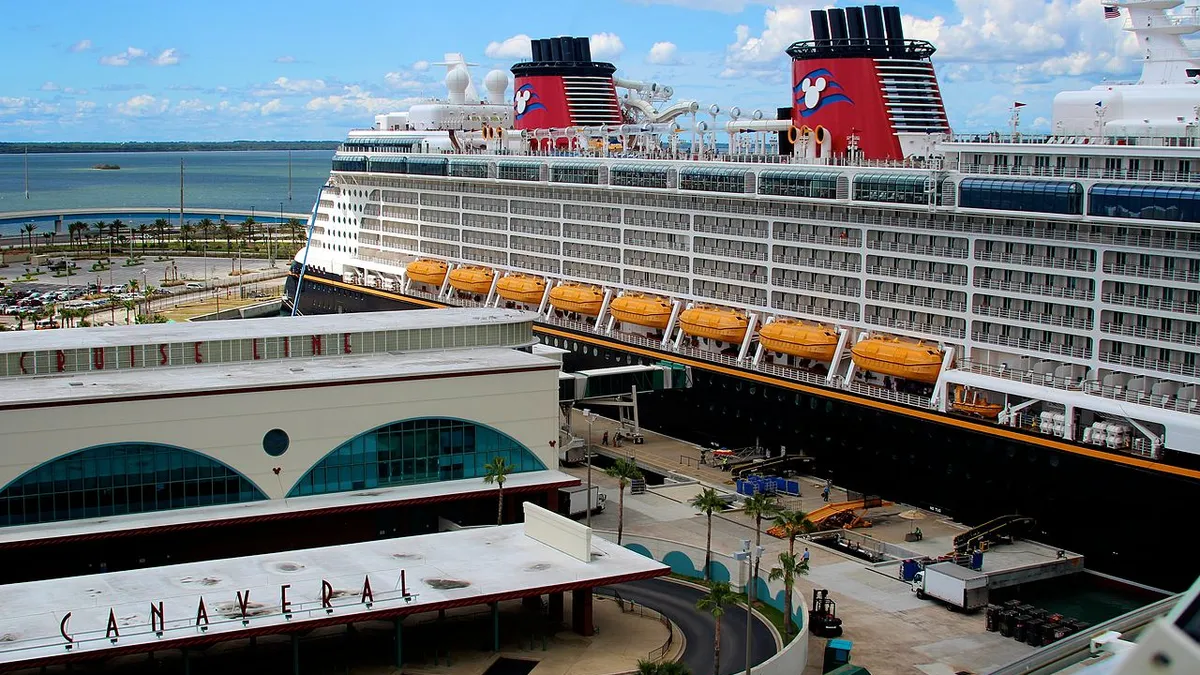Dive Brief:
- A new $2.5 billion master plan for Florida's Port Canaveral will include the construction of three new $150 million cruise ship terminals, renovations to two existing terminals and the possibility of a fourth new terminal after 2040, according to The Maritime Executive.
- Port Canaveral's upgrade would also feature a designated spaceport area near existing SpaceX facilities; improvements to current dining and retail establishments; a 500-person conference space; and a new transit center.
- Funding for all of the improvements and upgrades will come from revenue generated by port operations.
Dive Insight:
The number of people opting for vacation cruises has continued to tick up over the past decade. Nearly 26 million people were forecast to take a cruise this year, according to the Cruise Lines International Association — a 62% increase from 2007.
In order to accommodate these new passengers, cruise lines planned to invest almost $7 billion in new ships, with 26 ocean liners on order at the end of 2016. But to accommodate for that increased capacity, a number of ports are beginning to expand their operational facilities.
Port Everglades in Fort Lauderdale, FL, will also see an increase of its cruise ship capabilities as part of a $437 million upgrade that will allow bigger ships to pull into the port. Dubbed the Southport Turning Notch Expansion, the project will deliver new berths, post-Panamax crane infrastructure and three times the deep-water turnaround space. Earlier this month, port officials announced that they had finished expanding the capacity of one cruise ship slip, the South Florida Business Journal reported.
According to a 2015 report from the American Association of Port Authorities, ports and their associated operations generate more than 23 million jobs. A separate report from the American Society of Civil Engineers found that more than 900 U.S. ports facilitate 99% of overseas trading — that adds $4.6 trillion to the U.S. economy, or more than a quarter of the country's overall economic activity.
To manage the rise in traffic, ports are increasingly upping their technology game through automation. Though that trend has received pushback from port workers, the International Longshore and Warehouse Union (ILWU) has acknowledged that the volume of West Coast port traffic is straining its workforce, according to The San Francisco Chronicle. To mitigate those effects, the ILWU recently voted to authorize a three-year contract extension with the Pacific Maritime Association, an agreement that allows for use of automation to stay in place.













